I’ve been writing a series called Turning Points here, in which I take an artist we all consider a master and try to look at them from the POV of their own lives at their own time. From the safe distances of history it is very easy to assume that master artists were considered masters in their own time (occasionally but by no means mostly), that they were happy, didn’t worry about money, and in general, enjoyed their “master” status while they were alive. I think it’s important – especially for the artists that read this blog — to realize that the artists we consider masters now absolutely struggled in their times. I think there’s lessons there to be learned from that, but also comfort to be had by knowing even the greatest artists had plenty of problems. Just like all of us. And fame, especially after death, doesn’t make you happy or fulfilled.
You can read these in any order, but so far we have talked about:
and most recently there was How John Singer Sargent was a victim of his success and ran away from his clients and almost stopped painting entirely
This time, we’re talking about Michelangelo. Maybe the most famous of the “ninja turtles” of the Renaissance. In the list of masterpieces of Western Art, there are many people who would rate his Sistine Chapel, his David, and his Pieta all in the top 5. Even is his own time, he was considered one of the most famous artists in Italy, and called “Il Divino” (The Divine). But did this mean he had a stress free happy life? Hell no.
I’m not going to go into the depths of Michelangelo’s life story, but let’s just say he was always a bit stubborn, cranky, and full of himself. He got kicked out of his apprenticeship in his teens because he felt mixing paints and plaster for frescoes was beneath him and he felt painting in general was a lesser form of art to sculpture — which kind of pissed off his teacher, a master painter. He got a reputation for abandoning half finished projects to flit off to another Italian city for a more interesting commission (or just newer one).
Although we can’t absolutely prove that he was gay, there’s an awful lot of erotic poetry and erotic drawings given to his decades long male companion, who was at his side when he was on his deathbed. Although we suspect many artists of the Italian Renaissance were gay, it certainly wasn’t safe to be. His portrayal of the nude male form definitely got him run out of Florence by Savonarola, who you may remember as the villain in my Botticelli article in this series.
If you’d like to watch a good biographical overview of Michelangelo, check out this video from Biographics:
I’m going to focus on two particular miserable periods of Michelangelo’s life, just as examples: the Hidden Room and the Sistine Chapel.
First, the Hidden Room: Michelangelo was no stranger to pissing off his patrons, but the worst example was when he pissed off Pope Clement II and the Medici Family so badly that he hid out in a tiny room for 3 months. Even though the Medici Family – the most powerful family in Florence – were his patrons, when there was a revolt against their rule in Florence, he sided against them. The Pope, also his client and also a Medici, was furious along with the rest of the family, and with that many powerful folks out to punish you there really wasn’t an Italian city state he could escape to. So he went underground, literally, and hid out in a tiny room (23′ x 6.5′) in the Medici Chapel that he had been working on when the revolt happened. After 3 months the Pope and Medicis must have gotten sick of looking at the unfinished commissions, because the Pope let it be known that Michelangelo could come out of hiding and get back to work without fear of punishment.
For 500 years no one knew where he had hid out, but in 1976 a secret room was uncovered in the Medici Chapel that had Michelangelo drawings all over the walls. And sometimes you can even visit them.
Next, the Sistine Chapel: Maybe the most famous Renaissance work of art. Michelangelo did not want to paint it. In fact he loathed painting and hadn’t touched a fresco since he was a teenaged apprentice. But when the Pope says you have to paint his chapel ceiling, you don’t really have a choice. Many art historians believe that’s why there’s so many thinly-veiled erotic references (those acorns are definitely penises) and erotic male figures. He was paying the Pope back with homoerotic imagery for forcing him to paint it at all. Although there is also a theory I read that the Pope was also gay and he wanted the erotic male imagery in there, and might have been Michelangelo’s lover, but that seems a little less likely to me, especially since Michelangelo was so miserable during the painting he literally wrote misery poetry about it:
I’ve already grown a goiter from this torture,
hunched up here like a cat in Lombardy
(or anywhere else where the stagnant water’s poison).
My stomach’s squashed under my chin, my beard’s
pointing at heaven, my brain’s crushed in a casket,
my breast twists like a harpy’s. My brush,
above me all the time, dribbles paint
so my face makes a fine floor for droppings!My haunches are grinding into my guts,
my poor ass strains to work as a counterweight,
every gesture I make is blind and aimless.
My skin hangs loose below me, my spine’s
all knotted from folding over itself.
I’m bent taut as a Syrian bow.Because I’m stuck like this, my thoughts
are crazy, perfidious tripe:
anyone shoots badly through a crooked blowpipe.My painting is dead.
Defend it for me, Giovanni, protect my honor.
I am not in the right place—I am not a painter.
Michelangelo told another friend “This is not my profession. I am wasting my time, and all for nothing, may God help me!”
Let’s remember folks, this is what he felt about one of the top 5 most famous works of art in the entire Renaissance, if not the entire history of western art. So remember, artists are not the best judges of their own work, making a masterpiece definitely doesn’t always make you happy, and you might be making a masterpiece right now and not even know it. Hang in there! I don’t write this series to depress us, I write it to make us all realize everyone struggles, even the greatest artists. And to remind us all that chasing fame for fame’s sake is not fulfilling. And remember Papal commissions aren’t all they’re cracked up to be.


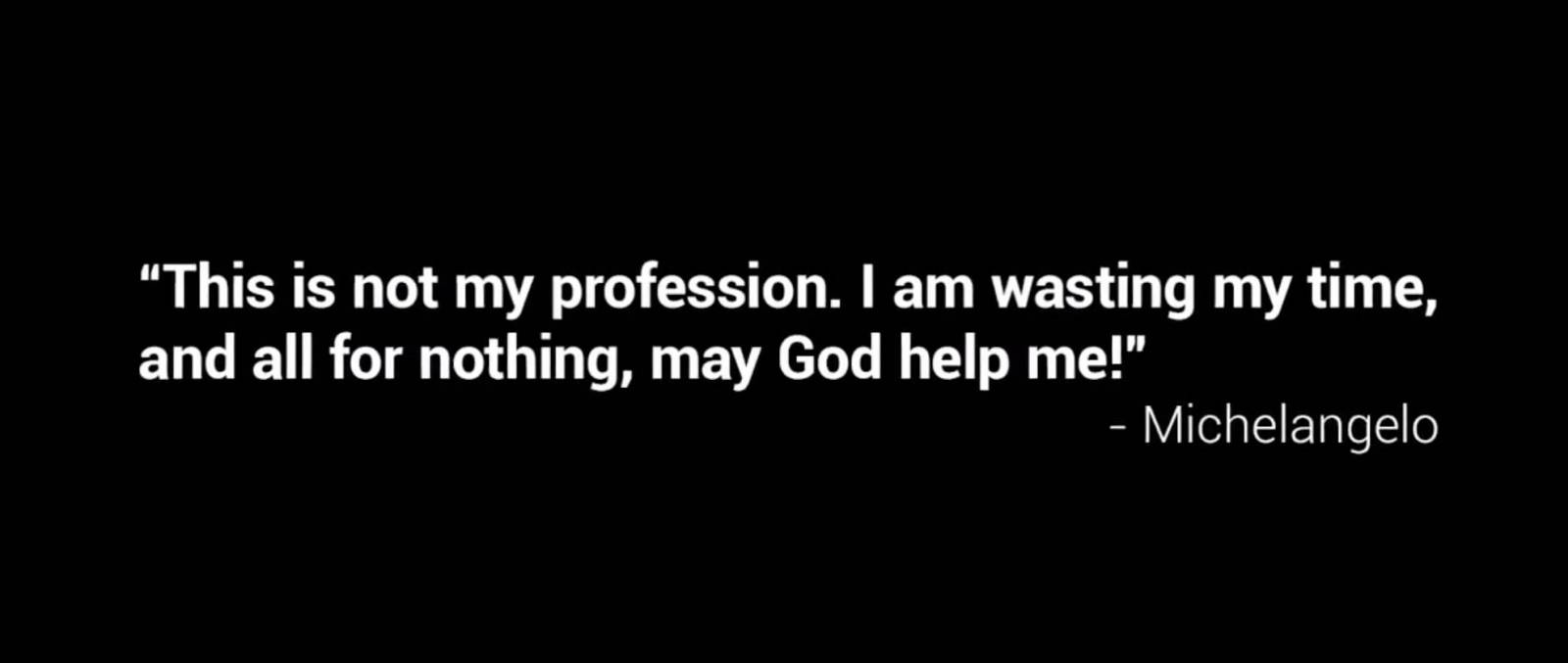
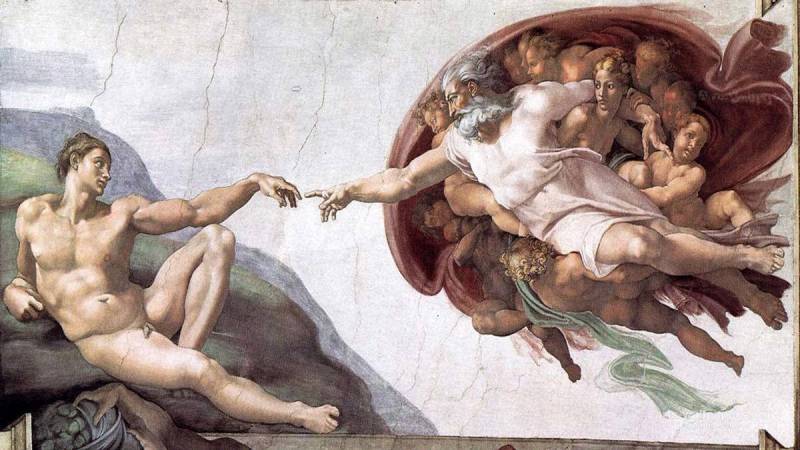
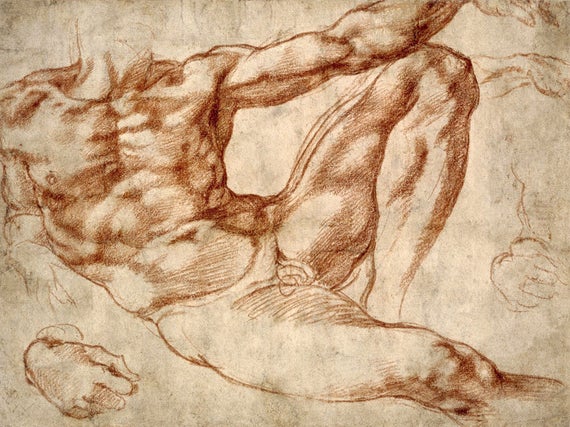



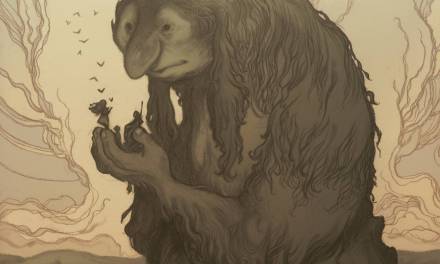
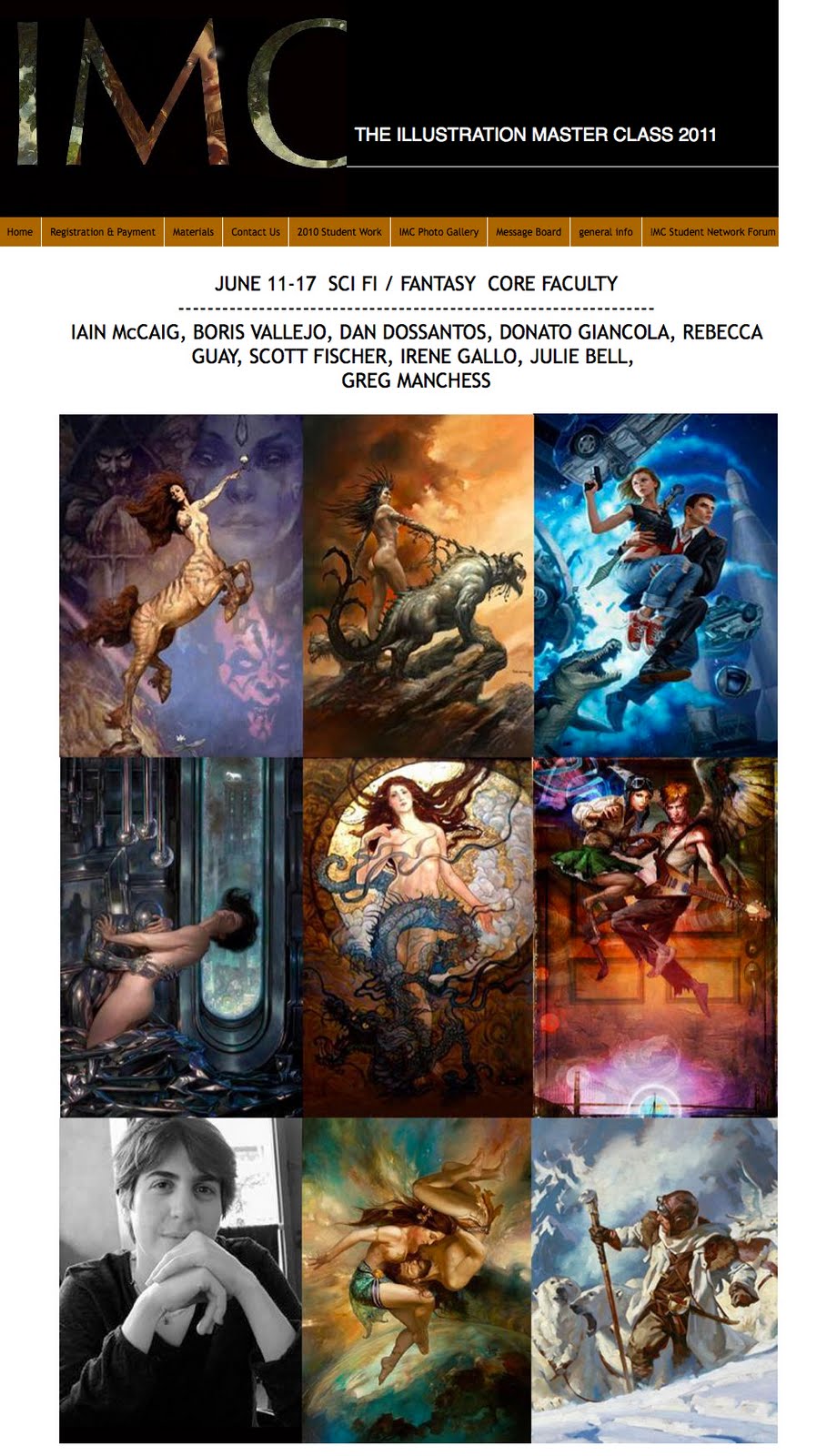
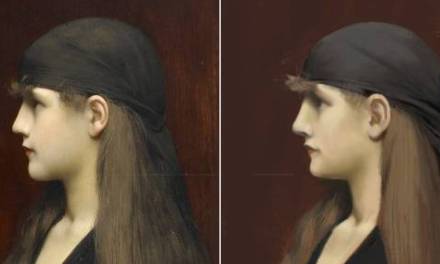
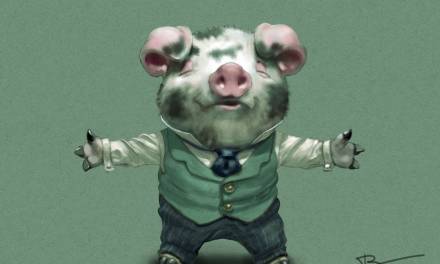

This is super interesting, thanks for writing it! As a teen I enjoyed the movie “The Agony and the Ecstasy,” anyone else seen it??
Great movie!
Man, he was such an artist! Thanks for sharing all this information Lauren! Good thing to think is that life is not always happy and hard work is important. Same as it is important to learn to deal with frustration and the fact that not always things are as we want!
Michaelangelo for sure understood this!
I specially like that you wrote all of this to remind people to trust in their art, it’s very lovely that pro people take the time to this Lauren! I’m such a self thrasher with my art. Which is still very noob.
Well clearly it’s not just noobs it’s masters too! I think the moral of that part of the story is that we all have an inner critic, and if you think it goes away the better you get at art, you’re unfortunately wrong. Instead of giving it strength by thinking it’s there because you’re not good enough, make friends with it. It’ll be there no matter how good you get. But it also drives you to keep bettering your work. You can give it room, but don’t let it shout out everything else.
Great article! It’s too often easy to get discouraged about a piece either because it is difficult to create or we doubt our solutions when we’re in the middle of creating them. It’s comforting in an odd way to hear of the self-made blocks the masters had. Thanks for throwing a light on this type of artistic angst.
That’s the goal exactly! We really do all struggle with the same things, whether we’re students or masters.